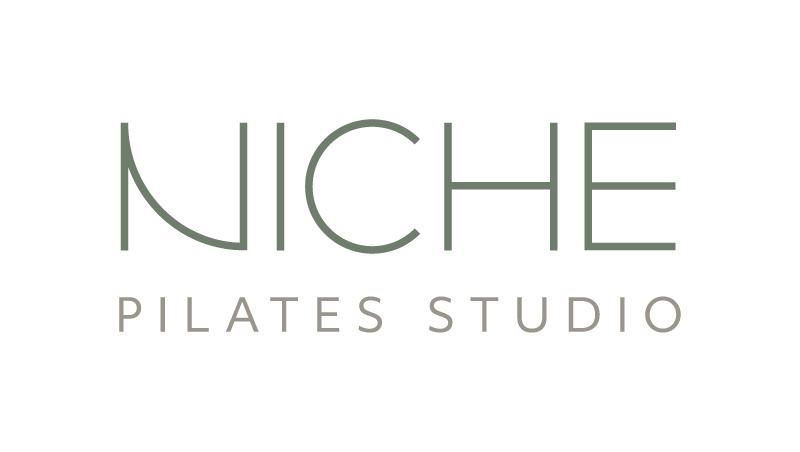Pelvic Floor 101: The Foundation of Your Core and Overall Wellness
When we talk about core strength or overall wellness, the pelvic floor is often left out of the conversation—and yet, it plays a crucial role in our mobility and general wellbeing.
Before we can talk about why pelvic floor health is critical to overall health, let’s first examine what the pelvic floor is. The pelvic floor is a group of muscles and connective tissues located at the base of your pelvis. These muscles form a supportive “hammock” that holds up your bladder, bowel, and reproductive organs. They also coordinate with your diaphragm, deep core, glutes, and spine to support your entire body’s alignment and stability.
Like we mentioned above, the term “pelvic floor” is rarely brought up in conversation outside of a studio (or the OBGYN). Chances are, if you are familiar with the term at all, you’ve heard it discussed in relation to post-partum recovery and pregnancy and usually, not in a positive sense. A weak pelvic floor post-birth has been extremely normalized (we have all heard a woman say “I laughed so hard, I peed my pants!”), and often, new mothers are sent home with minimal guidance on how to heal or restore their pelvic health. If women receive any guidance on how to strengthen their pelvic floor, they are usually told to “do kegels,” and while this movement can be beneficial to strengthening the pelvic floor, there is so much more that can be done.
But pelvic floor dysfunction isn’t limited to new mothers. It can affect people of all genders and at any life stage. Chronic sitting, high-impact exercise, aging, hormonal changes, stress, and poor posture can all contribute to imbalances in pelvic floor function.
If you experience any of the signs and symptoms of a weak (or overly tight) pelvic floor—whether you're a new parent or not—the first step would be to consult a pelvic floor physical therapist. Although variations of pelvic floor dysfunction have been normalized, it shouldn’t be, and we want everyone to know that there are so many ways to strengthen and restore these muscles!
Pelvic floor physical therapy (PT) can help assess and treat:
Muscle weakness or tension
Pain or discomfort
Diastasis recti (abdominal separation)
Bladder or bowel issues
Sexual dysfunction
If you’re already practicing, you’re working with the pelvic floor—whether you know it or not. Pilates principles like breath, alignment, control, and core integration all support pelvic floor health in powerful ways:
Breath
Diaphragmatic breathing is a cornerstone of Pilates—and it’s also essential for pelvic floor function. On an inhale, the diaphragm moves downward, and the pelvic floor responds by lengthening. On an exhale, the pelvic floor lifts and contracts. This subtle movement helps the pelvic floor stay supple and responsive.
Many people unknowingly hold their breath during movement, creating unnecessary pressure in the abdomen and pelvis. At Niche, we start each class with breathwork because focusing on your breath is work. As you deepen your Pilates practice and your body awareness, you’ll find seamless coordination between the diaphragm, core, and pelvic floor.
Core Engagement
The pelvic floor doesn’t work in isolation—it’s part of your “inner core unit,” which includes the diaphragm, transversus abdominis, and multifidus (a deep spinal stabilizer). These muscles work as a team to support your spine, pelvis, and organs. Pilates strengthens this system holistically. Instead of focusing on superficial core exercises (like crunches), Pilates teaches you to access deep core engagement that supports function and stability from the inside out.
For many Pilates exercises, the core is working without that being the main muscle group you are targeting. Even in a table top (or all fours) position, your core is working to keep your back and body engaged. If you are in this position on the reformer with a light spring load, your core is working even harder.
Precision and Control
The pelvic floor is not a muscle group that benefits from brute strength or mindless repetition. It thrives on nuance and subtlety. Pilates emphasizes controlled, intentional movement. This helps prevent common compensation patterns, like over-bracing the abs, clenching the glutes, or bearing down—habits that can actually stress or inhibit the pelvic floor over time.
Alignment
Posture plays a critical role in pelvic health. A chronically tucked pelvis, flared ribs, or collapsed spine can all interfere with pelvic floor function. Pilates restores natural alignment, helping the pelvis, spine, and ribcage find their optimal position. This not only supports better posture but allows the pelvic floor muscles to work efficiently, without being overtaxed or underused.
It’s About Balance, Not Just Strength
Pelvic floor health isn’t about “tightening” or clenching—it’s about balance, coordination, and awareness. A healthy pelvic floor knows when to contract, when to relax, and how to move in sync with your breath and body. It’s not a muscle group you should be gripping all day (just like you don’t walk around flexing your biceps constantly).
Many people—especially those in high-stress lifestyles—experience pelvic floor tension, not weakness. This means the muscles are actually too tight and have lost the ability to relax. Pilates, with its emphasis on full-body integration, gentle strengthening, and relaxation, can help release this tension and re-establish a healthier muscular pattern.
If you’re curious about what’s happening in your own body, consider connecting with a pelvic floor physical therapist or working with a movement teacher trained in pelvic health. Even a few sessions can help you build awareness and unlock better coordination throughout your core.
And if you’re already practicing Pilates, know that you're in a great position to support your pelvic floor through conscious, aligned movement. Pilates doesn’t just teach you how to move—it teaches you how to listen. With each breath, each controlled articulation of the spine, you’re cultivating a deeper relationship with your body’s foundation.


